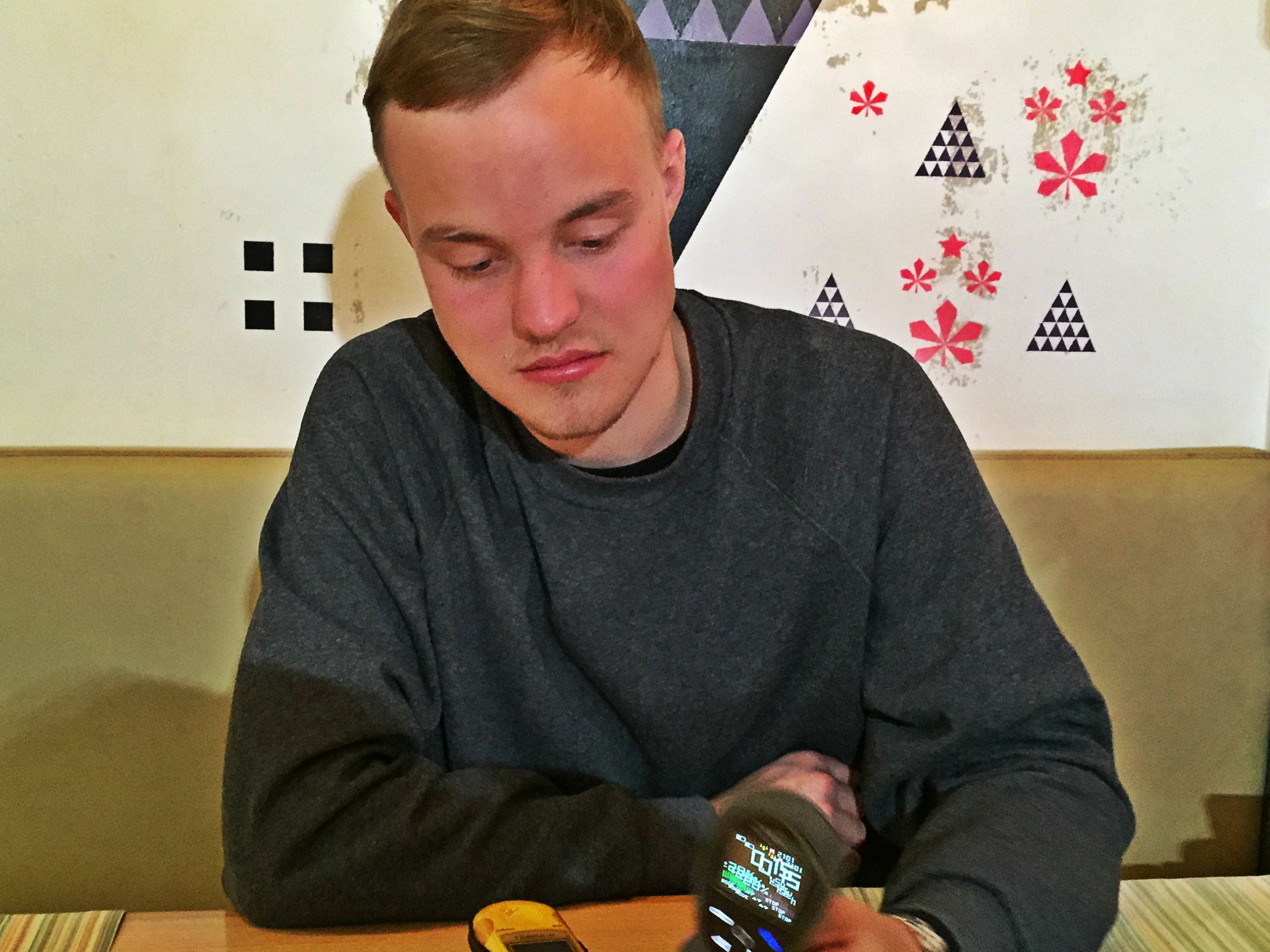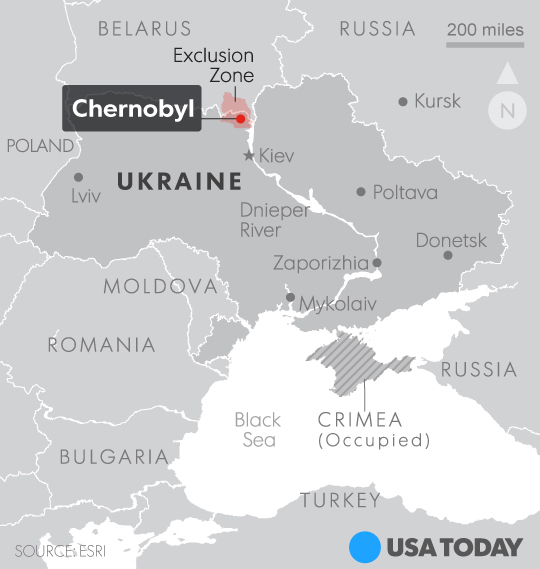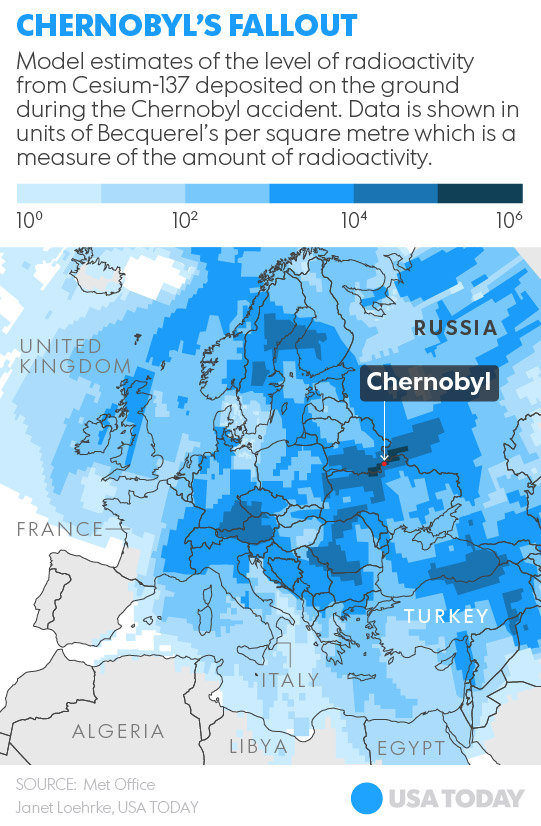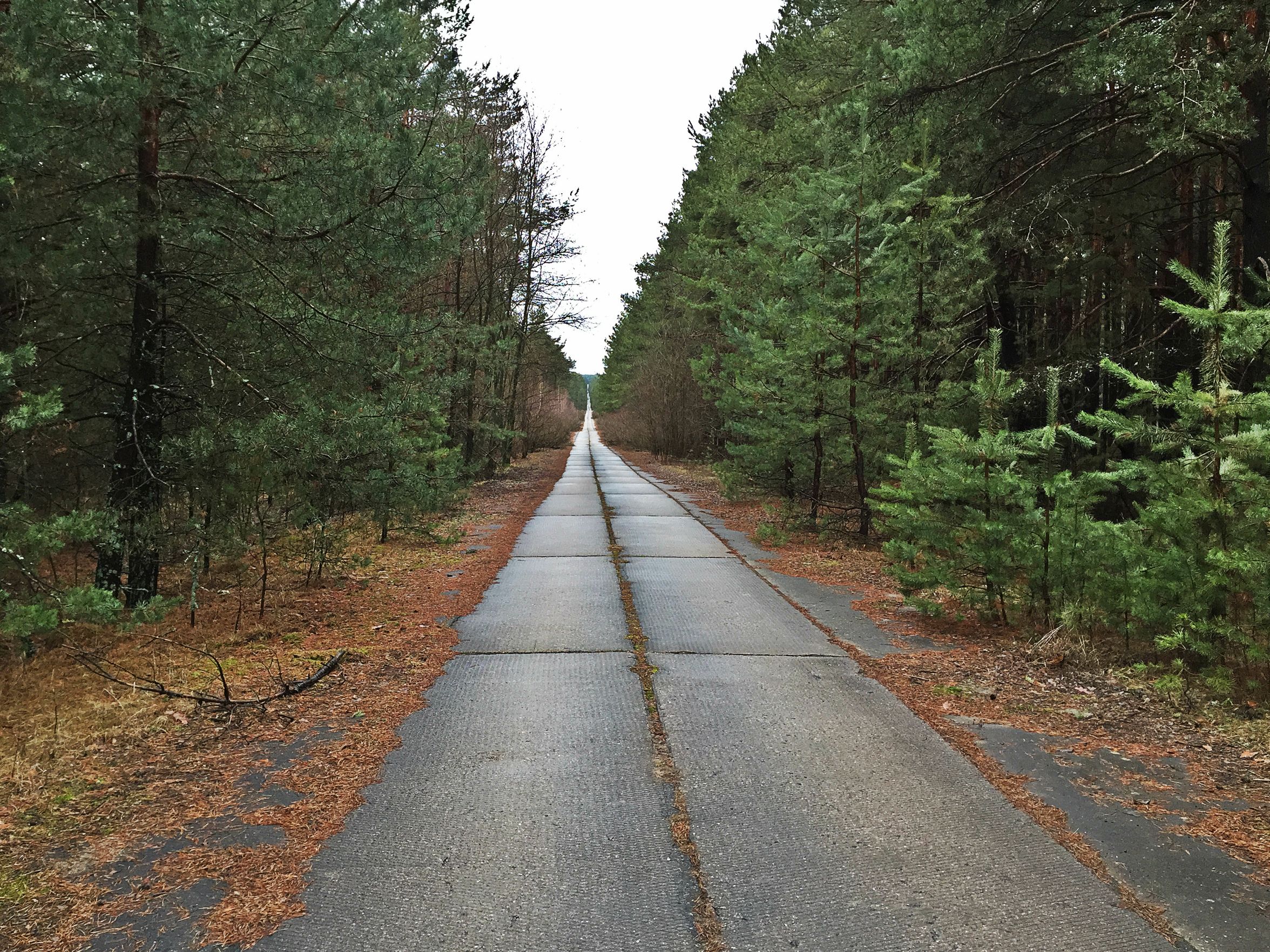Some people go to the mountains. Some to the beach. Oleg Shalashov, 23, prefers one of the most radioactive spots on Earth: the Chernobyl Exclusion Zone.
"It’s a quiet place. You can think about everything, and whatever problems you might have don’t seem that important," Shalashov said recently over a cup of tea in Kiev.
Shalashov, who works for Ukraine’s economics ministry, placed two handheld Geiger counters — devices that measure radiation levels — on the table as he spoke. He had just returned from the Zone, a 1,000-square-mile area evacuated after a reactor at Chernobyl's nuclear plant melted down following an early-morning explosion on April 26, 1986.
There are actually two zones: one in Ukraine and a separate off-limits area in Belarus. The one in Belarus is rarely mentioned or visited except by scientists, in part because of the tight restrictions the government imposes on journalists. Both are wild radioactive kingdoms that seem healthy and ordinary to the naked eye. But the forests, lakes, rivers and marshes disguise the contamination in the soil, on the leaves and nestled in forsaken villages.

The narrow, two-lane road to the Zone from the south feels like driving toward the end of a peninsula that never materializes. For miles, silver birch trees — and eerie silence — line this road. The first checkpoint is a single, simple barrier. A small, plain building housing a few guards sits to one side. Next to that is a partially hand-drawn map with dozens of incomprehensible numbers faded by rain and sun along with the international symbol for radioactive danger.
This hazard trefoil symbol is small, almost comically so.
Radiation has no taste or odor, and it can't be seen or heard. Three decades after the catastrophe, a key part of the Chernobyl experience remains essentially the same: You effortlessly leave one world and enter another.
On a recent Sunday, Shalashov was in Ukraine’s Zone legally. "Where I go to relax," he said.
During the week at the economics ministry, he promotes Ukraine as a tourist destination, a tough sell when a war with Russian separatists raging in the east has killed more than 9,000 people. He spends weekends in Chernobyl as a government guide.
Shalashov used to be what Ukrainians call a stalker, someone who defies the official government prohibitions and secretly enters the Zone in the spirit of exploration, romance, bravado, desperation or simply because they found a way to get in undetected.
"In the early days, the first stalkers in the Zone were murderers and other criminals escaping the police, stealing things, this was somewhere they could go to hide. But my friends and I, we were only interested in the adventure of being there and seeing something new," Shalashov said.
"It was just a few people at first, but by the time I was doing it we were breaking in with a crew of about 10-15 people, depending on the day," he said. "We pretended to be in the army and made sure we were quieter than the grass or the wind. It was really something. The best days."

Shalashov's connection to the Zone runs deep.
Both of his parents and an aunt had jobs connected to the power plant. One of his first drawings he remembers making at school was of the so-called sarcophagus, the cover built over the plant’s damaged reactor to minimize the spread of radiation into the air.
"It had a tank on one side and the stick-figure of a man on the other," he said.
Shalashov’s first visit to Chernobyl was illegal. He accompanied his father and a few friends on a hunting trip. Radiation is especially dangerous for children because their bodies are still developing.
"I was only told that we would go to a place where there were a lot of animals," he said. "It was dark when we got into a small boat to cross a river that would take us into the Zone and I didn’t understand what I was seeing, only that there were many buildings without lights."
He was 16.
This did not trouble him then and does not concern him now. "No health problems," he said.
For Kirill Stepanets, 27, the allure of the zone is so great that he has visited it 50 times — 40 of them illegally. He has written a book that describes the experiences of stalkers and attempts to explain their motivations.
"Stalkers are people who like to visit different urban environments in abandoned or semi-abandoned places," he said.

Like Shalashov, Stepanets said he does not fear the radiation and he believes the potential health impacts are exaggerated.
“Yes, there is radiation there, but how often do you use airplanes? There are many people who fly from one country to another and I expect that they routinely get more than 100 times more radiation than me when I visit the Zone,” he said. “We’ll have to wait and see.”
Stepanets said he spends the night in Chernobyl, using an abandoned apartment in Pripyat, a derelict city built to house workers of the nearby power plant. It was evacuated after the accident.
"There are about 10,000 empty apartments in Pripyat that are in ruins, with leaking ceilings, mushrooms growing in them, but there’s also a few thousand that still have wallpaper, the windows are fine, furniture is not broken, there’s beds — quite comfortable really," he said.
Exact figures do not exist for the number of stalkers who regularly visit the Zone, but Stepanets said he would estimate about 100. He knew of several stalkers who used to routinely travel from Russia, but has not come across any lately, possibly because of the hostilities in Ukraine's east and economic sanctions placed on Moscow.
And if he gets caught?
"If you don’t take anything with you when you leave, if you don’t poach, if you don’t gather radioactive mushrooms, if you don’t steal some abandoned building materials or other items — well, if they catch you then you might just get off with a fine," he said.



